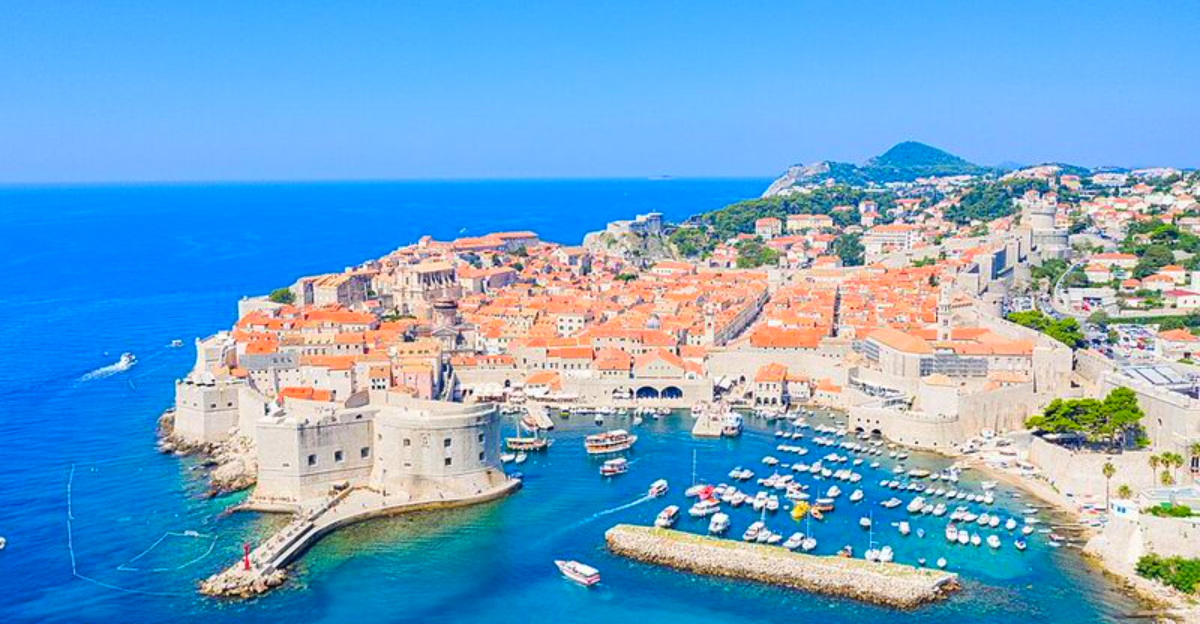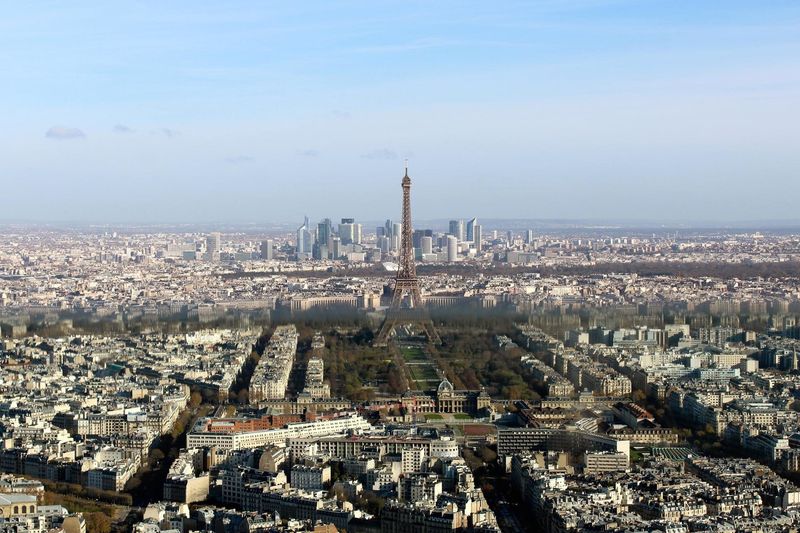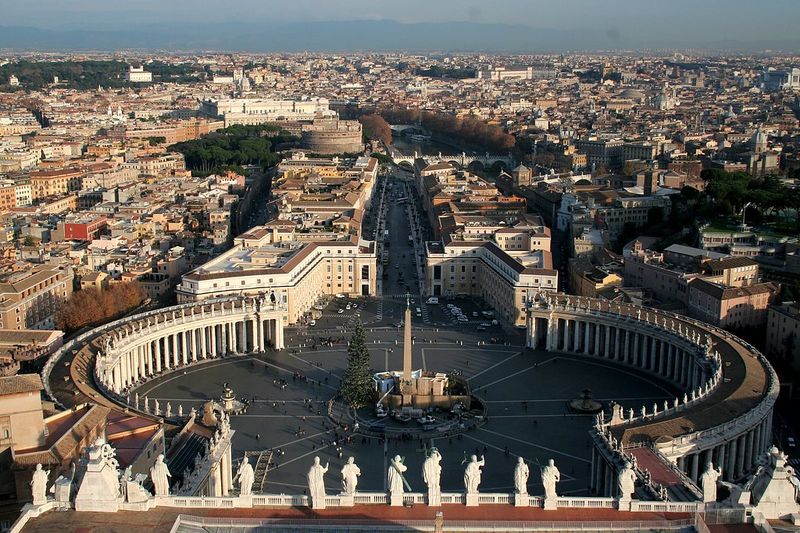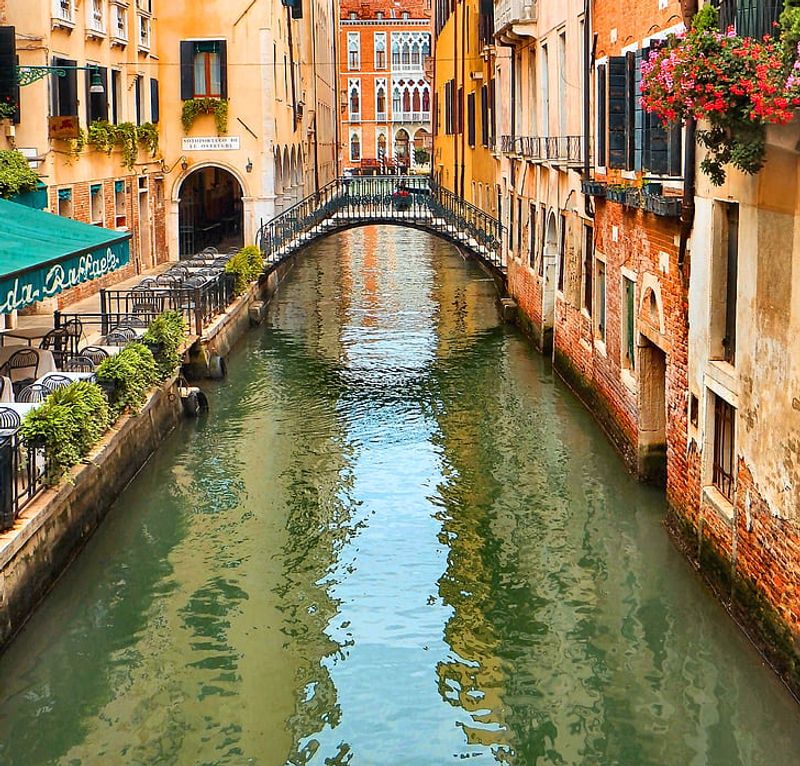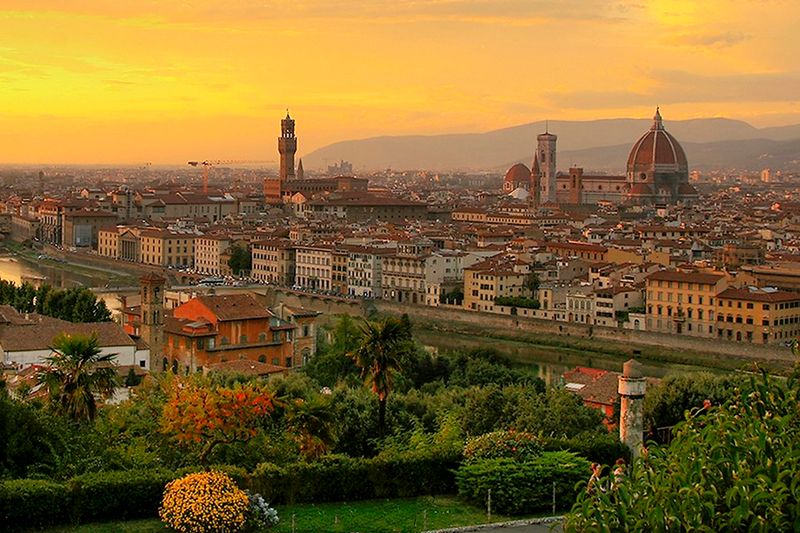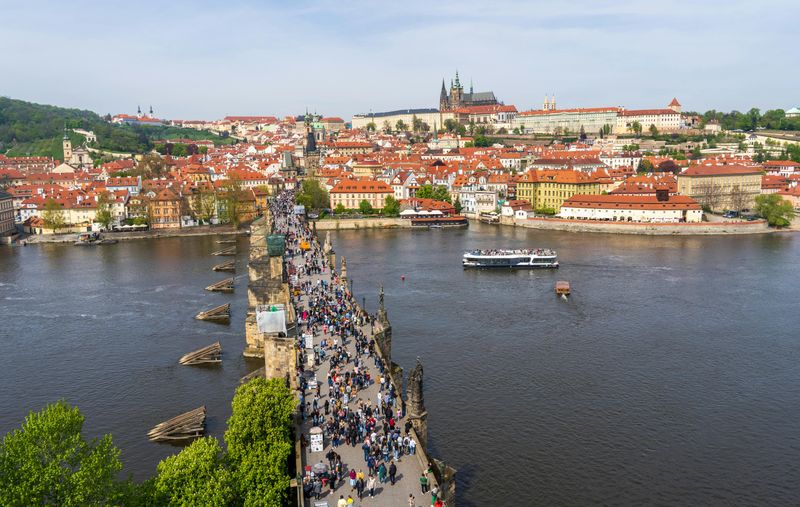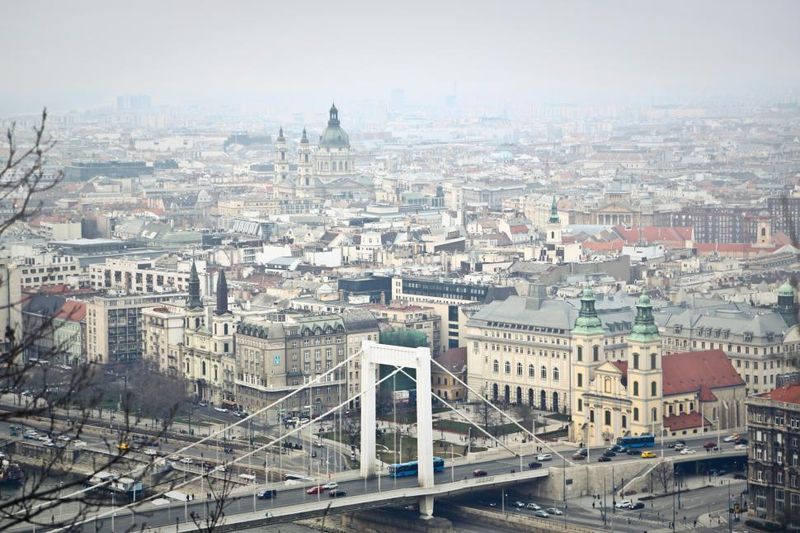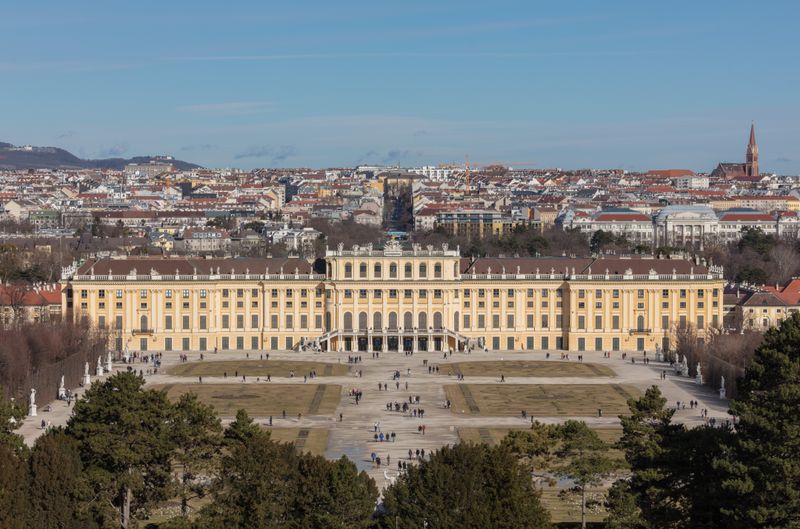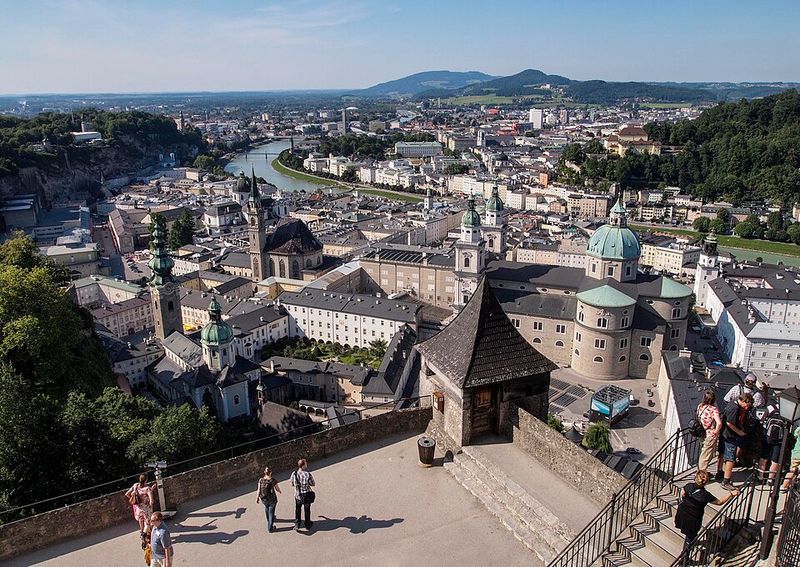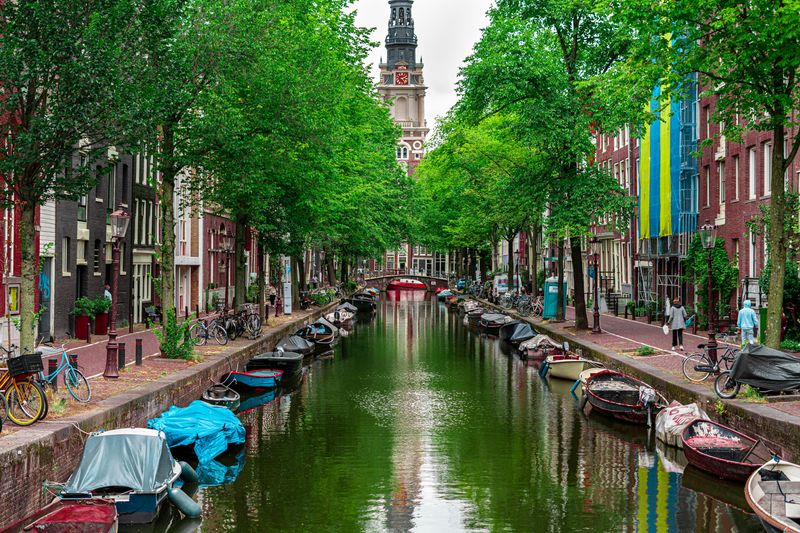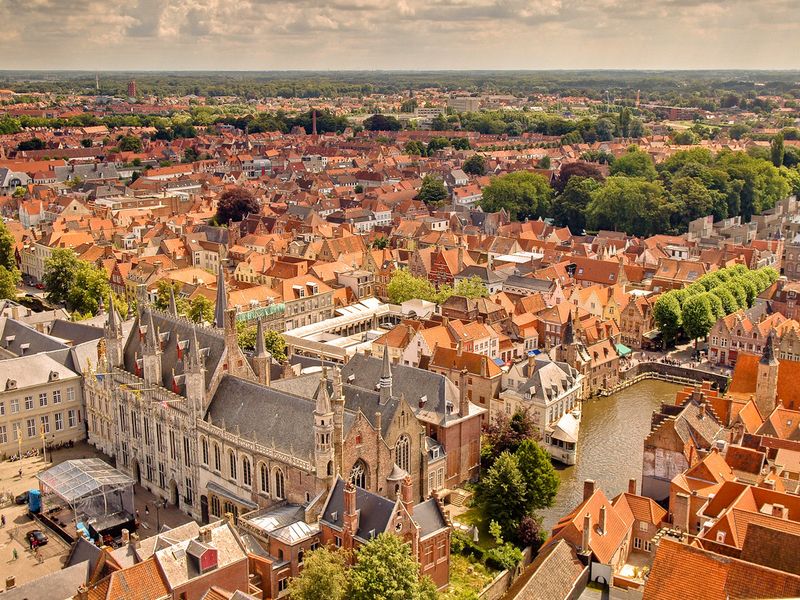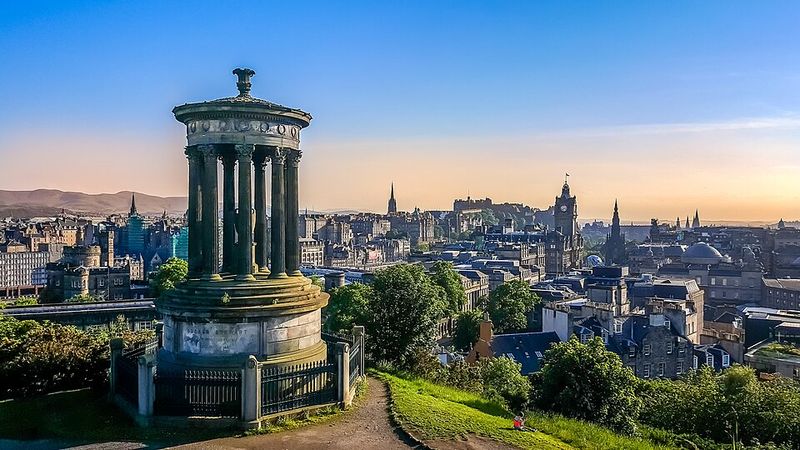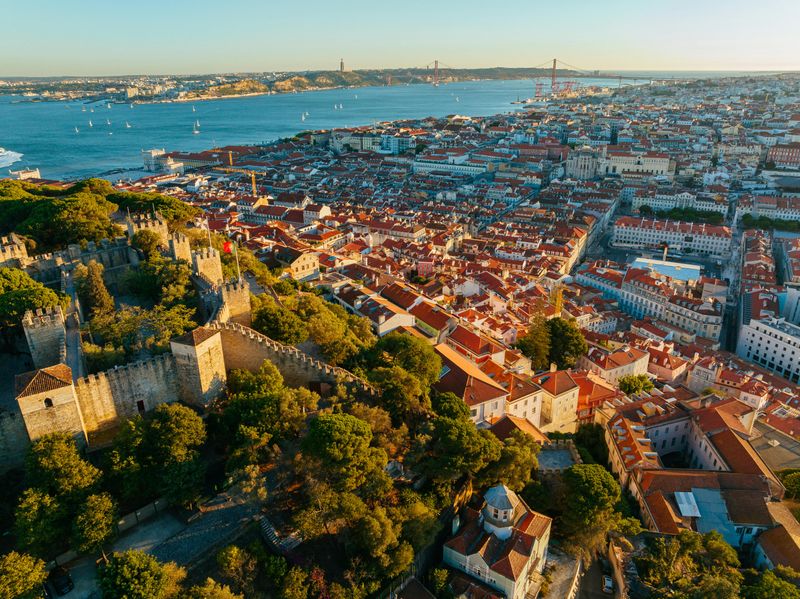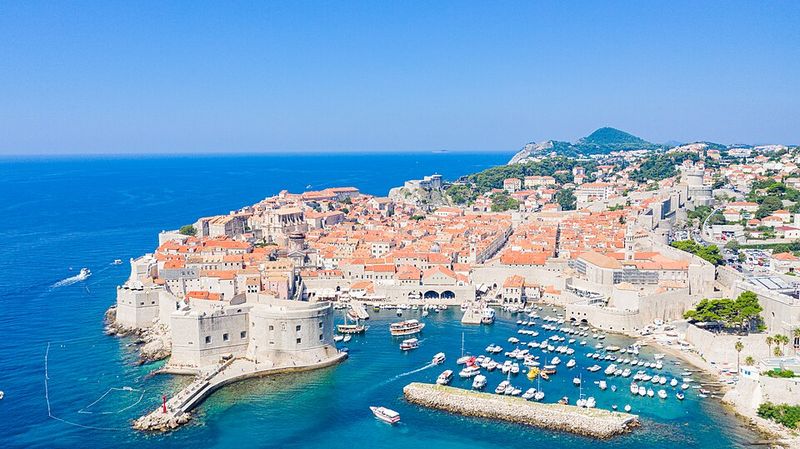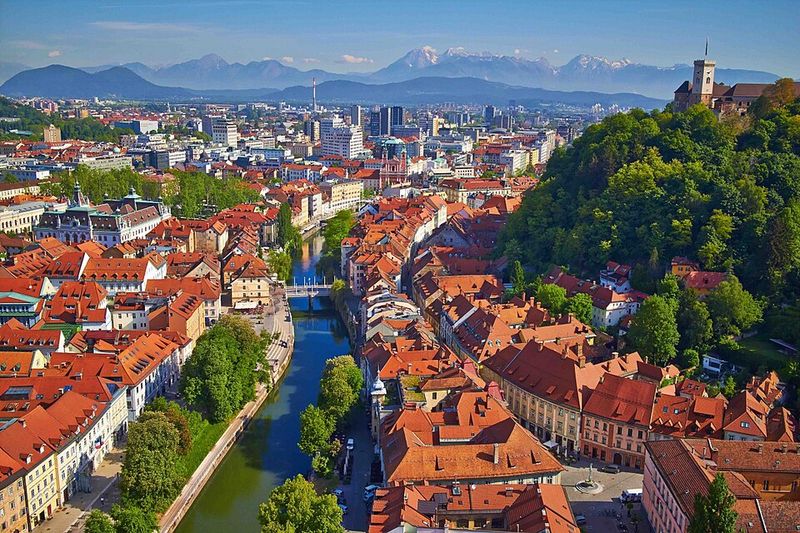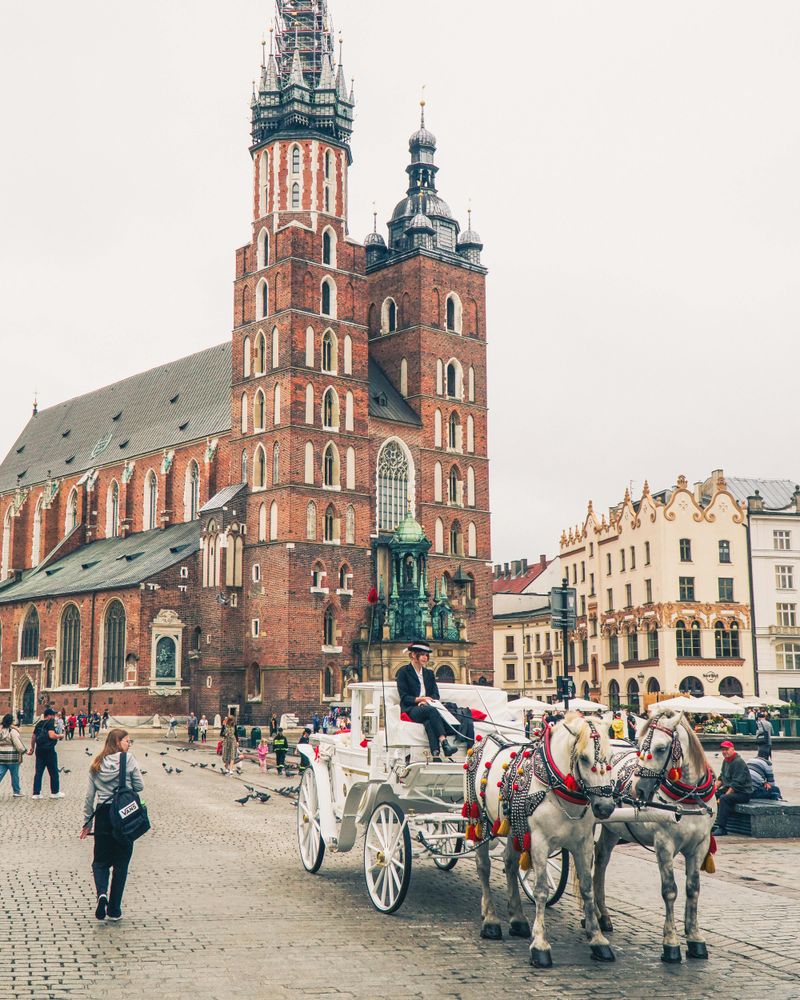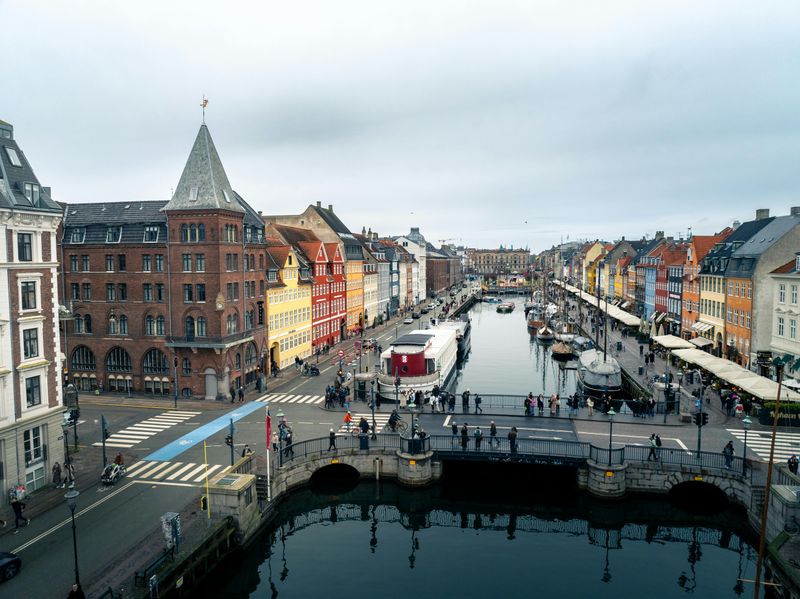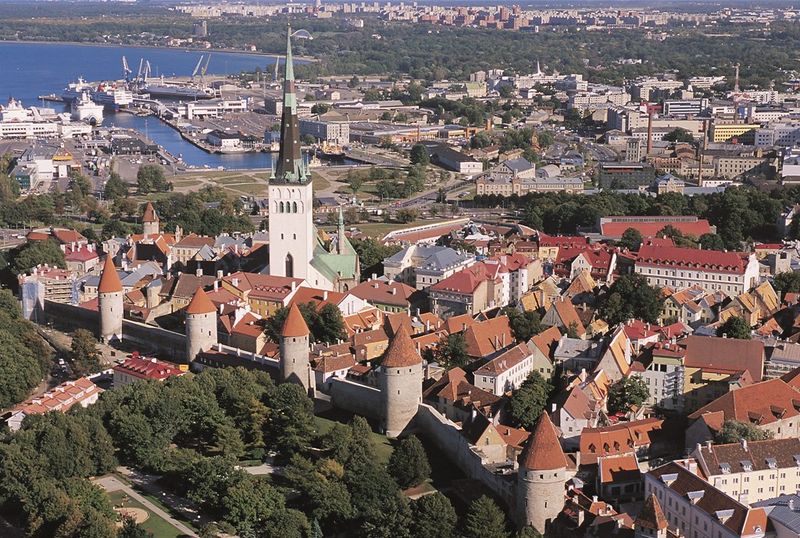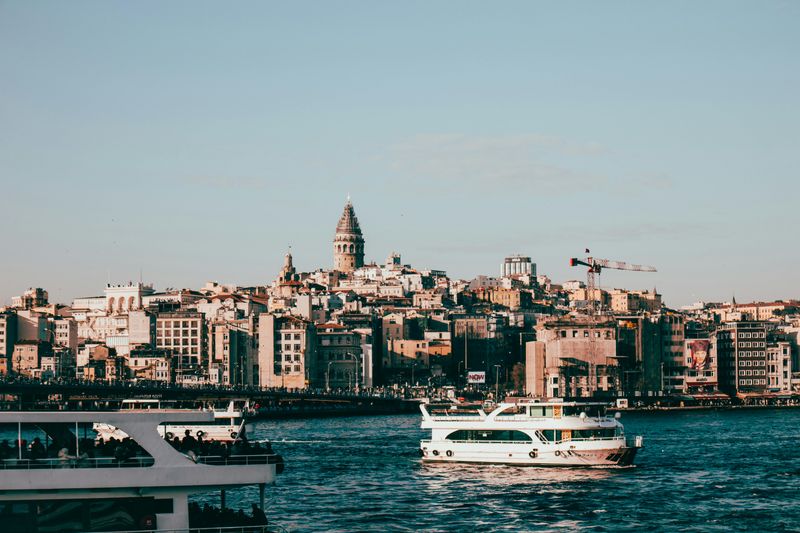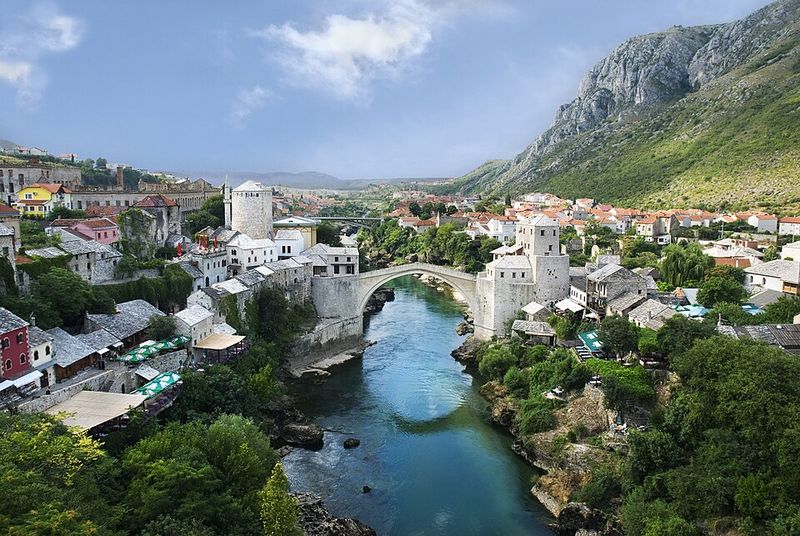Europe is home to some of the most beautiful cities on the planet, each with its own charm and character. From cobblestone streets and historic castles to sparkling canals and mountain backdrops, these places make locals beam with pride. Whether you’re planning your next adventure or just dreaming about faraway places, these twenty cities will inspire you to pack your bags and explore.
1. Paris, France
Imagine strolling down wide tree-lined boulevards where every corner looks like a painting. Paris has earned its reputation as one of the world’s most romantic cities thanks to its elegant architecture and riverside charm. The Eiffel Tower dominates the skyline, while neighborhoods like Montmartre offer winding streets full of artists and cafés.
For the best views, head to Trocadéro at sunset when the tower lights up against the pastel sky. The public rooftop terraces at Galeries Lafayette and Printemps also offer sweeping panoramas without any admission fee. Spring and early fall bring perfect weather for exploring.
Walking along the Seine between Pont Neuf and Pont des Arts at dusk is pure magic, with golden reflections dancing on the water.
2. Rome, Italy
Rome feels like walking through a living museum where ancient ruins share space with Renaissance masterpieces. Layers of history stack up everywhere you look, from the Colosseum’s weathered arches to the splashing waters of Trevi Fountain. Ochre-colored buildings line cobblestone piazzas, creating a warm glow that photographers adore.
Catch sunrise at the Aventine Hill’s Giardino degli Aranci for orange-scented breezes and jaw-dropping city views. The Pincio Terrace offers another stunning vantage point over the rooftops. Visit between March and May or in autumn when temperatures stay comfortable.
Early mornings transform popular spots like the Trevi Fountain and Spanish Steps into peaceful havens before tour groups arrive.
3. Venice, Italy
Built on water, Venice defies logic and captivates hearts. Gothic palaces rise from lagoon waters, connected by over four hundred bridges that create an enchanting maze. The Grand Canal serves as the city’s main highway, lined with centuries-old mansions showing off their ornate facades.
Climb the bell tower at San Giorgio Maggiore for a breathtaking panorama across to St. Mark’s Square. This view captures the full magic of the floating city spread before you. Late spring and early autumn offer ideal visiting conditions with fewer crowds.
Budget travelers can experience a Grand Canal cruise by riding public vaporetto line 1 at dusk, watching palaces glow in the fading light.
4. Florence, Italy
Brunelleschi’s massive red dome rises above Florence like a crown, announcing the birthplace of the Renaissance. Art and architecture blend seamlessly in this compact city where masterpieces hide around every corner. The Ponte Vecchio bridge spans the Arno River, its jewelry shops glittering in the Tuscan sun.
Piazzale Michelangelo delivers the postcard-perfect panorama, especially at sunset when the city glows golden. Climbing a bit higher to San Miniato al Monte rewards you with even more spectacular views. April through May and September through October bring pleasant temperatures for exploring.
Cross the river to discover the Oltrarno neighborhood, where artisan workshops line quieter streets and locals gather in authentic trattorias.
5. Prague, Czechia
Fairy-tale spires pierce the sky above Prague’s medieval heart, creating a skyline straight from storybooks. The Vltava River curves gracefully through the city, crossed by the famous Charles Bridge with its parade of Baroque statues. Old Town Square’s colorful buildings and astronomical clock transport visitors back centuries.
Letná Park and Petřín Hill both offer elevated views that capture Prague’s enchanting rooftops and towers. Dawn on Charles Bridge means you can photograph the empty span before crowds arrive. Spring through early summer provides the most comfortable weather for sightseeing.
Walk along the riverside from Mánes Bridge toward Charles Bridge for classic photo opportunities with castle and spires as your backdrop.
6. Budapest, Hungary
Two cities in one, Budapest straddles the Danube with hilly Buda on one side and flat Pest on the other. The Parliament building’s neo-Gothic splendor dominates the riverbank, while Fisherman’s Bastion offers fairytale turrets with mountain views. Grand avenues and thermal baths add to the city’s unique character.
Climb Gellért Hill to the Citadella area for sweeping views across both sides of the river. After dark, the illuminated bridges create spectacular reflections best seen from the Pest promenade. Spring and fall bring ideal conditions for walking tours.
Watching the Chain Bridge and other spans light up against the night sky ranks among Europe’s most memorable sights.
7. Vienna, Austria
Imperial grandeur defines Vienna, where Habsburg palaces stand surrounded by perfectly manicured parks. The Ringstraße boulevard circles the historic center, lined with museums, opera houses, and government buildings. St. Stephen’s Cathedral’s Gothic spire marks the heart of the old city.
Kahlenberg hill provides views over vineyards toward the city, while the giant Ferris wheel in the Prater offers a rotating panorama. Spring through early summer is lovely, but December transforms Vienna into a wonderland of Christmas markets. Riding a tram around the entire Ringstraße gives you an affordable city tour.
The combination of classical music heritage, coffee house culture, and architectural splendor makes Vienna unforgettable for locals and visitors alike.
8. Salzburg, Austria
Mozart’s birthplace nestles beneath an imposing fortress, with Baroque church domes creating a silhouette against alpine peaks. Salzburg’s compact old town charms visitors with narrow lanes like Getreidegasse, where wrought-iron signs swing above boutiques. The Salzach River divides the city, offering waterfront promenades on both banks.
Mönchsberg and Kapuzinerberg hills provide elevated viewpoints that capture the fortress, spires, and mountain backdrop in one frame. Summer months and December’s Advent season are particularly magical times to visit. Cross the Makartsteg footbridge for stunning skyline shots framed by distant peaks.
The combination of alpine scenery and architectural elegance creates a uniquely Austrian atmosphere that locals treasure deeply.
9. Amsterdam, Netherlands
Concentric canals circle Amsterdam’s center like liquid streets, lined with narrow houses that lean at charming angles. The Golden Age left behind gabled facades, many topped with elaborate decorations. Bridges draped with flowers connect neighborhoods like the trendy Jordaan, where locals relax in brown cafés.
Magere Brug and the corners of Brouwersgracht offer particularly photogenic canal scenes. Early mornings let you explore before the famous bicycle traffic takes over the streets. April through June brings tulip season and pleasant weather, while September offers another ideal window.
The Canal Belt’s UNESCO-listed waterways create an instantly recognizable cityscape that Amsterdammers proudly call home.
10. Bruges, Belgium
Time seems to have stopped in Bruges, where medieval buildings reflect perfectly in calm canals. Cobblestone streets wind past guildhouses decorated with stepped gables, and the Belfry tower watches over the central Markt square. Horse-drawn carriages clip-clop through lanes that look unchanged for centuries.
The Rozenhoedkaai canal corner delivers the quintessential Bruges photo, especially during blue hour when lights begin twinkling. A walking loop from there to Bonifacius Bridge takes you through the most fairytale-like scenery. Visit between March and June or in autumn and winter for seasonal charm.
Locals take pride in their perfectly preserved city, where chocolate shops and lace makers continue centuries-old traditions.
11. Edinburgh, Scotland (UK)
Volcanic hills shape Edinburgh’s dramatic profile, with a castle perched on one rocky outcrop and Arthur’s Seat rising behind. The medieval Old Town’s narrow closes and wynds contrast with the Georgian elegance of the New Town. Calton Hill’s monuments add a touch of Athens to Scotland’s capital.
Climb Arthur’s Seat at sunrise for panoramic views that stretch to the Firth of Forth. Calton Hill offers another spectacular vantage point without the steep hike. Summer months provide the longest days, while December’s festive lights create special atmosphere.
Victoria Street’s colorful curve reportedly inspired Diagon Alley, making it one of the city’s most photographed spots among proud locals.
12. Lisbon, Portugal
Seven hills covered in terracotta rooftops tumble down to the sparkling Tagus River, creating Lisbon’s signature landscape. Azulejo tiles decorate building facades in blue and white patterns, while vintage yellow trams rattle up steep streets. The Alfama neighborhood’s Moorish-influenced lanes hide fado music venues and family-run taverns.
Miradouro da Senhora do Monte and Santa Luzia viewpoints showcase the city’s layered beauty. Tram 28E winds through historic districts, but early rides beat the crowds. March through June and September through November offer comfortable temperatures for exploring hills.
Strolling the riverside from Cais do Sodré past monuments in Belém lets you experience Lisbon’s maritime heritage and contemporary energy.
13. Porto, Portugal
Colorful houses stack up Porto’s steep hillsides like a vertical village, overlooking the Douro River’s dramatic gorge. The Dom Luís I Bridge’s iron arches span high above the water, connecting Porto to Vila Nova de Gaia’s port wine cellars. Azulejo-tiled São Bento station welcomes arrivals with stunning blue murals.
Cross to Jardim do Morro or Serra do Pilar for sunset views that capture the entire Ribeira waterfront. The skyline looks most magical from the Gaia side of the river. April through June and September provide perfect weather for riverside walks.
Porto’s gritty authenticity and artistic energy make locals fiercely proud of their city’s character and traditions.
14. Dubrovnik, Croatia
Pale limestone walls encircle Dubrovnik’s Old Town, creating a stunning contrast against the cobalt Adriatic. Red-tiled roofs pack tightly within the fortifications, and the marble-paved Stradun cuts through the center. Fort Lovrijenac guards the western approach from its seaside cliff.
Mount Srđ’s lookout, reached by cable car or winding road, delivers breathtaking views over the entire walled city and islands beyond. Sunrise near Pile Gate means empty streets and warm light on ancient stone. Late spring and early autumn avoid summer’s overwhelming crowds.
Game of Thrones filming made Dubrovnik world-famous, but locals have always known their city ranks among Europe’s most beautiful treasures.
15. Ljubljana, Slovenia
Pastel-painted buildings line the Ljubljanica River, creating a storybook setting in Slovenia’s compact capital. Art Nouveau bridges like the Dragon Bridge showcase early 20th-century craftsmanship, while a hilltop castle watches over leafy parks. Car-free zones encourage strolling, cycling, and riverside café culture.
Ljubljana Castle’s viewpoint and Nebotičnik skyscraper terrace both offer panoramic perspectives over the city’s red roofs. Following the river from Dragon Bridge to Cobbler’s Bridge at dusk rewards you with romantic reflections. April through June and September bring ideal conditions.
Often overlooked by tourists, Ljubljana charms visitors with its relaxed vibe and green spaces that locals enjoy year-round.
16. Kraków, Poland
Europe’s largest medieval market square spreads out in Kraków’s heart, surrounded by colorful townhouses and anchored by St. Mary’s Basilica. The Gothic church’s mismatched towers create an asymmetrical silhouette that defines the skyline. Royal Wawel Castle crowns a hill above the Vistula River.
Walk down to the riverbank below Wawel at sunset for views of the castle and cathedral glowing against the sky. The Planty Park ring follows old fortification lines, offering green paths around the Old Town. Spring through early summer and September provide comfortable exploring weather.
Kraków survived wars largely intact, preserving architectural treasures that fill residents with deep pride in their cultural heritage.
17. Copenhagen, Denmark
Nyhavn’s rainbow row of 17th-century townhouses lines a canal filled with wooden ships, creating Copenhagen’s most iconic scene. Nordic design sensibility meets historic charm throughout the Danish capital, where bicycle culture dominates transportation. Amalienborg Palace’s changing of the guard adds royal tradition to modern urban life.
The Round Tower provides central city views, while Christiansborg Tower offers another public viewpoint. Islands Brygge’s harborfront shows Copenhagen’s contemporary side with swimming areas and modern architecture. May through September brings warmest weather and longest days.
Golden hour at Nyhavn transforms the colorful facades into a glowing masterpiece that Copenhageners never tire of photographing.
18. Tallinn, Estonia
Medieval turrets and red roofs pack Tallinn’s Old Town, one of Europe’s best-preserved Hanseatic centers. Cobblestone streets wind past merchant houses and guild halls that have stood for centuries. Town Hall Square serves as the heart, surrounded by pastel-painted buildings and outdoor cafés.
Kohtuotsa and Patkuli viewing platforms on Toompea Hill deliver stunning panoramas over the lower town’s towers toward the Baltic Sea. Walking along the city walls reveals different angles of fortifications against water. Summer months and December’s Christmas markets offer special atmospheres.
Despite its small size, Tallinn’s remarkably complete medieval character makes Estonians proud of their capital’s unique preservation.
19. Istanbul, Türkiye (European side)
Where East meets West, Istanbul’s skyline bristles with domes and minarets that span Byzantine and Ottoman eras. Hagia Sophia’s massive dome anchors Sultanahmet Square, while the Blue Mosque’s six minarets create an unforgettable silhouette. The Bosphorus strait separates continents, crossed by ferries and bridges.
Çamlıca Hill and the Galata Bridge at sunset provide spectacular viewpoints over layered history. Public Bosphorus ferries offer affordable cruises past palaces and fortresses. Spring and early fall bring comfortable temperatures for exploring this vast metropolis.
Walking from Karaköy through Galata to Istiklal Avenue reveals urban layers that blend tradition and modernity in ways only Istanbul can.
20. Mostar, Bosnia and Herzegovina
A graceful stone arch leaps across the emerald Neretva River, rebuilt after war to restore Mostar’s iconic bridge. Ottoman-era houses climb the riverbanks, their white stone glowing in Balkan sunshine. The Kujundžiluk bazaar’s narrow lanes offer copper crafts and Turkish coffee in settings unchanged for generations.
Riverbank viewpoints below the bridge and nearby Lucki Most capture the full arch reflected in green waters. Early morning or late afternoon provides the best light and fewer crowds on the bridge. Spring through early summer and September offer ideal visiting conditions.
The reconstructed Stari Most symbolizes resilience and reconciliation, making it deeply meaningful for locals who rebuilt their treasure.
